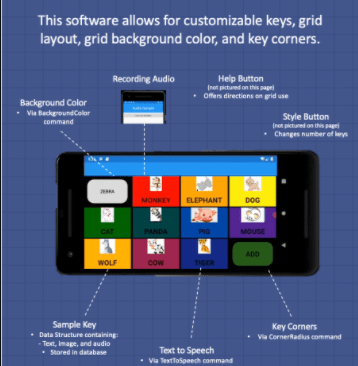Penn State Learning Factory team members: Abby Riggio, Brad Beltran, Aron Jalbuena, Guohao Shen, Tzu Hsiang Yeh, William Ye & Yuchun Wu (Biomedical Engineering, Computer Engineering, Computer Science, Data Science)
RERC on AAC team members: Erick Jakobs and David McNaughton
Overview: Over 2 million people worldwide rely on Augmentative and Alternative Communication (AAC). The objective of our project was to create a software using Visual Studio that can be researched to help individuals with communication difficulties and/or speech impairments. The software was coded using Xamarin C#. The software consists of keys arranged in rows and columns with dead space in between each key. Each key contains a picture, text, an audio file and background color. A style button allows users or researchers to choose a different grid layout of keys as well. This app is not meant to be used by a person with a disability as it is currently configured. Our goal was to write the code that would create an easily customizable prototype app that could be used in research activities to explore new device features (e.g., pop-up text when a button is selected). This grid prototype will facilitate further research into the customizability of AAC as a whole.

Objective: Customizable Assistive Communication Grid
– speech recognition
– text to speech
– customizable key corners and grid layout
– creation of new keys
– ability to edit pre-existing keys
Approach
– Xamarin C# coding via Microsoft Visual Studios
Outcomes
– Customizable assistive communication grid prototype for research purposes
– Features: help button that guides the user, keys can be created and edited, text to speech, storage of keys after application is closed, ability to edit overall grid layout
Project Summary
Penn State Learning Factory Description
